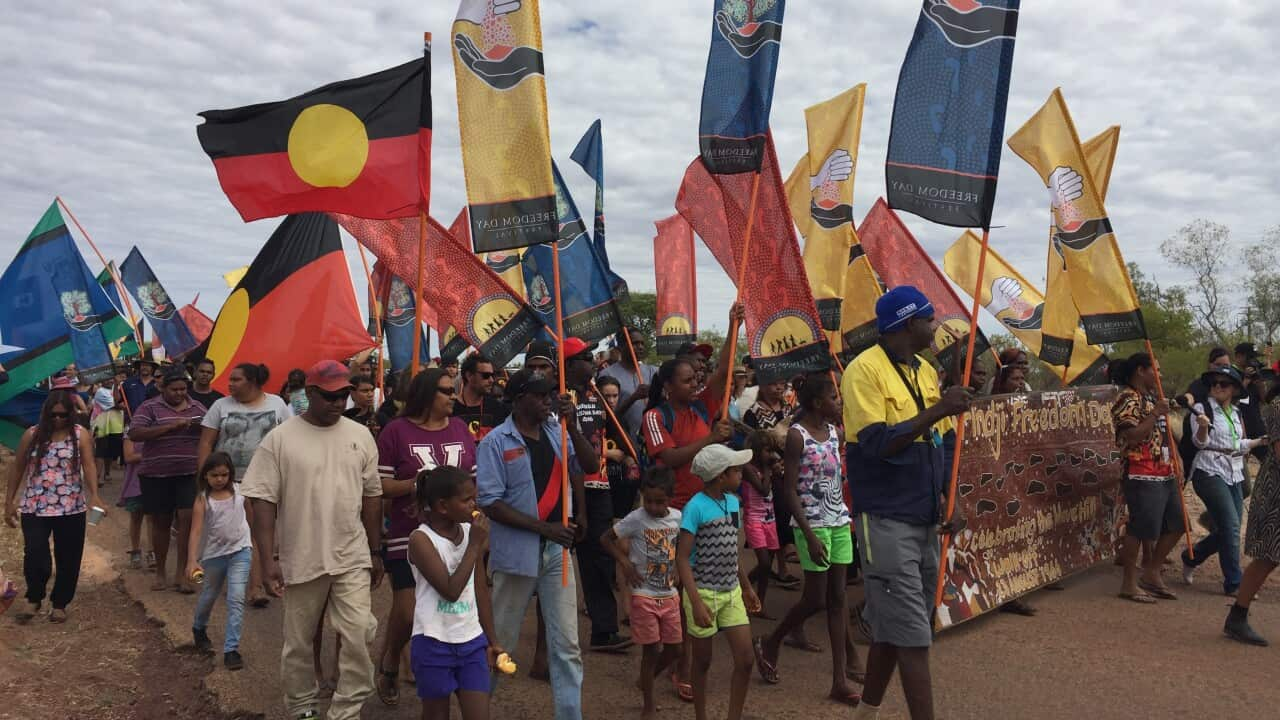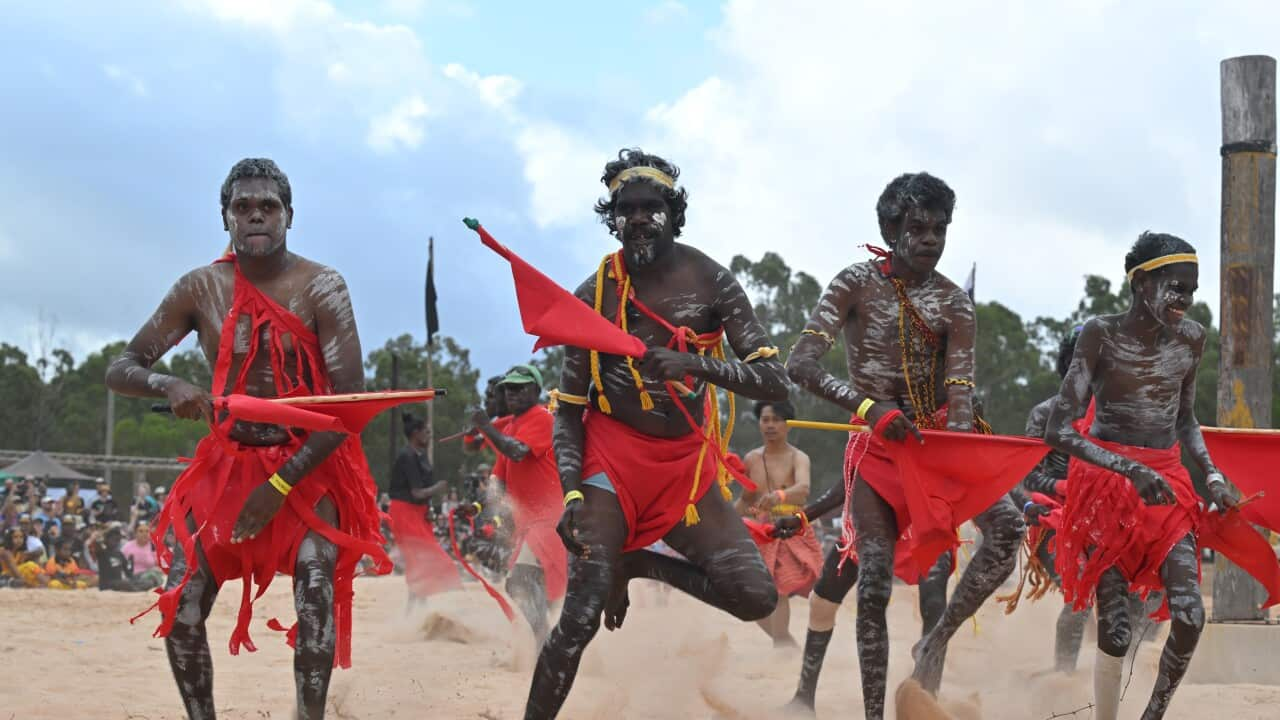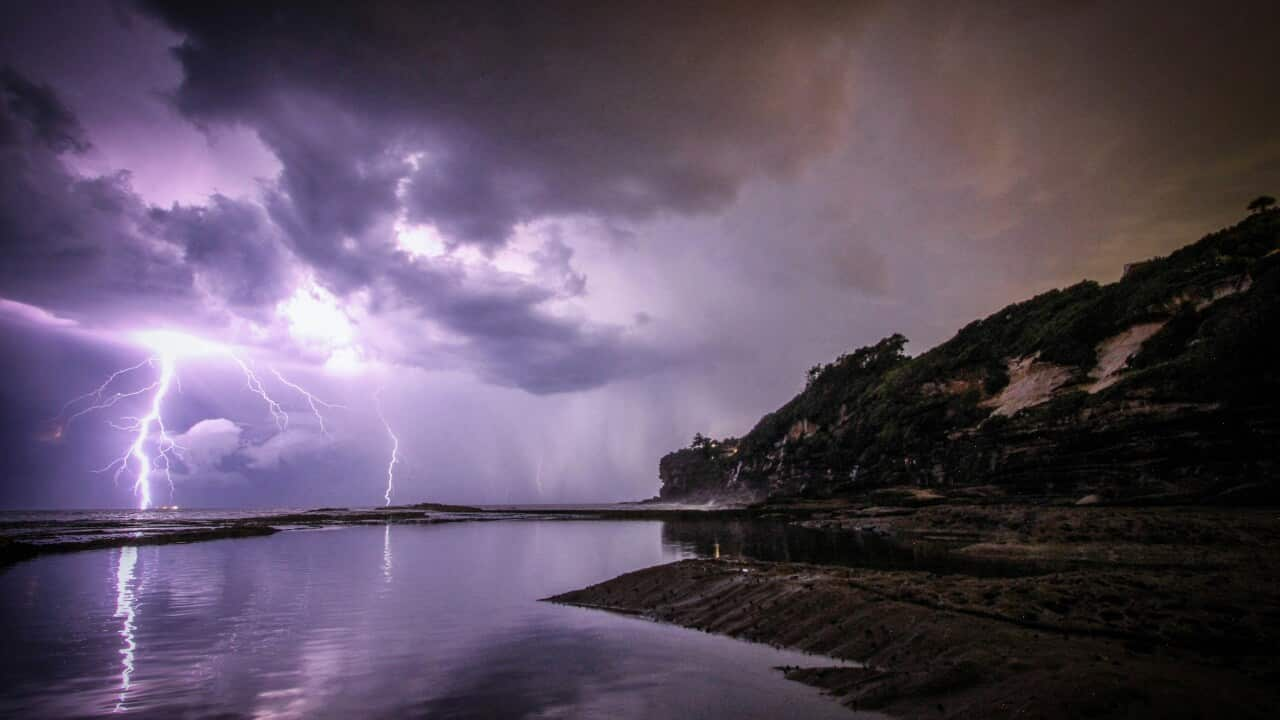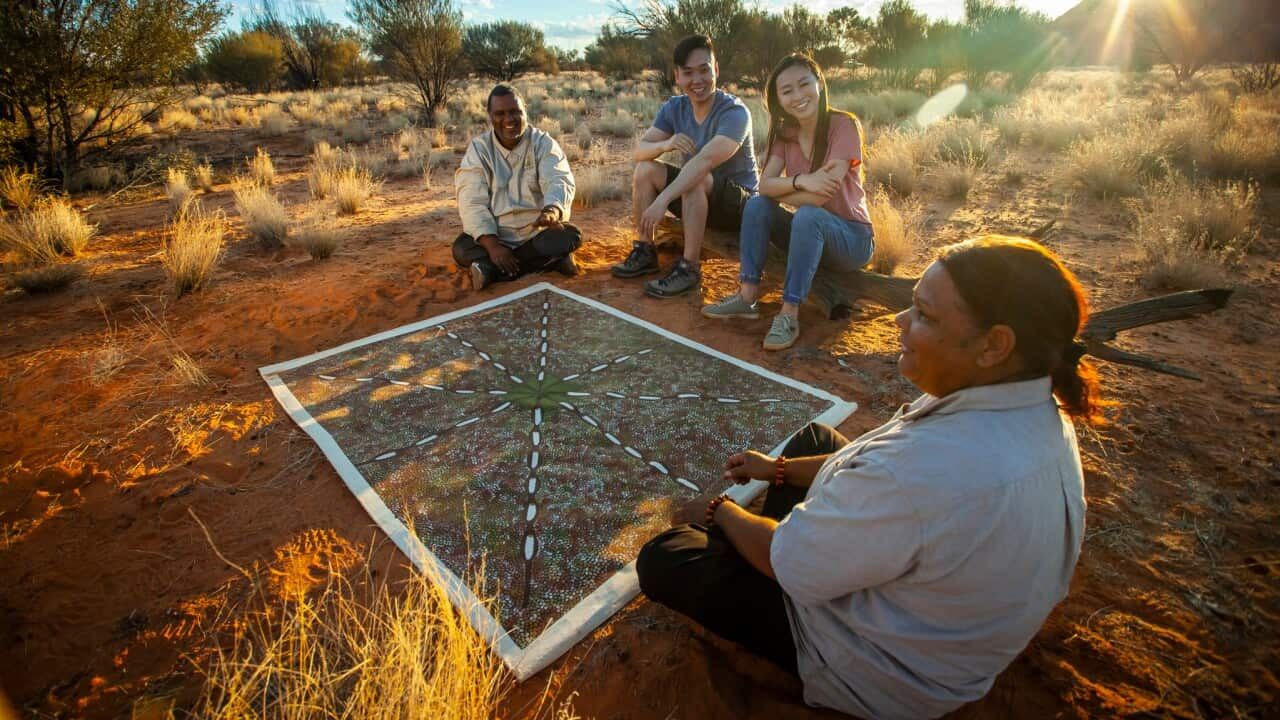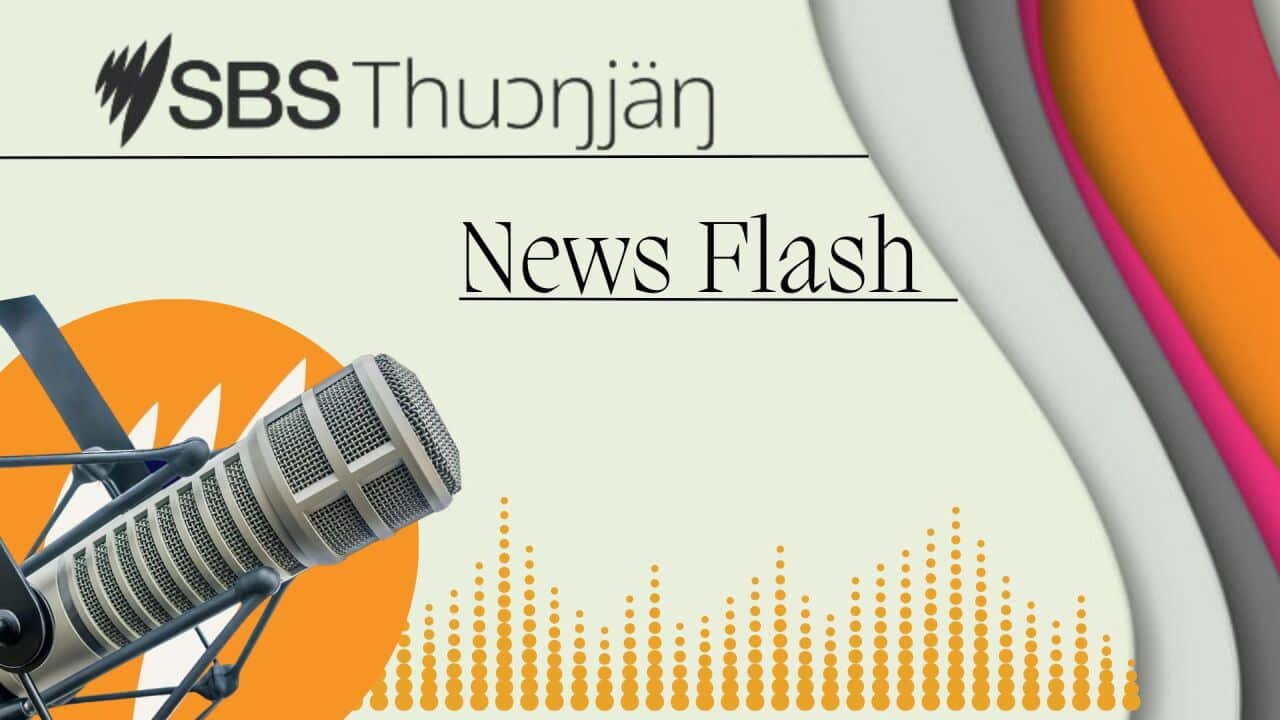Kä tɔu thin
- Land rights return certain areas of Crown land — not private property — to Aboriginal and Torres Strait Islander communities for cultural, social, and economic benefit.
- Land rights, native title, and treaty are different legal and political processes, but all aim to recognise First Nations peoples’ connection to Country and support self-determination.
- The movement began with events like the 1966 Wave Hill Walk-Off, leading to landmark laws such as the Aboriginal Land Rights (Northern Territory) Act 1976, with progress still ongoing today.
- Ye yïïth yiënda kek lëŋ Aboriginal nhïïm piny pan Australia?
- Ye keda yeen jɔ̈k ke lëŋ Aboriginal nhïïm yïïth piɛ̈nyden akutden kënë?
- Yëŋo ye lööŋ lëŋ Aboriginal nhïïm piɛ̈nyden gël?
- Yeŋö kënë yeen tek thok ke lëŋ Aboriginal nhïïm yiith piɛ̈nyden, lööŋ kɔ̈c baai ku aguiɛɛr cï maatic?
- Yeŋo ye löŋ lëŋ Aboriginal nhïïm pïny rilic yeen yakölë?
- A local example: Darkinjung Aboriginal Land Council
- Ye ke yinda keek ka dhɛ̈ɛ̈l rɛɛl tuëŋ tɛn yïïth lëëŋ Aboriginal nhiim piny?
- Ye wɛ̈t ŋo ril yeen yic kɔc thɛɛr nhïm näŋ piɛ̈nyden tɛn kɔc eben Australians?
Ye yiith yinda leŋ Aboriginal nhiim piny pan Australia?
Tɛnë ruun juëëc, nuëët kɔc kuät Aboriginal ku Torres Strait Islander keek piɛ̈nyden ake këc ŋic. Lööŋ yïïth piny aci keek looi bi keek yiëk löŋ ke gëlgël pïny keek ke ye ŋuɛ̈ɛ̈k piɛ̈nyden.
Kaam tuëŋ luɛ̈ɛk, Kɔc Aboriginal ku Torres Strait Islander aa ke muuk piiny nhom tɛn ruun tim juëëc.
Mɛn lööny/luɛ̈ɛ̈k aci pïny kënë nyiaai ke cïn kuat mɛ̈tmɛ̈t ci looi, ke cï thaany kɔu wɛt cië yiic yen lueel acïe piny leeŋ nhom raan, wɛ̈tde yic "piny acïn raan töŋ lëŋ nhom yeen."

Prime Minister Gough Whitlam symbolically returning land to the Gurindji people on 16 August 1975, an act famously represented by Whitlam pouring sand into Vincent Lingiari's hand. Source: AAP
Ye kada jok yïïth ke leeŋ Aboriginal nhiim piny?
Yïïth lëŋ kɔc nhïïm piny yemënë aa jɔkye ciök ruon 1966 kek ye Cath Wave Hill Walk-Off— ke jɔk ye ciök ke ye kɔc pan Gurindi ku kääcken baai alɔ̈ŋ Northern Territory. Cääth ci keek lɔ aɣer kënë aci nyuɔ̈th käŋ kedhië tɛ rɛ̈ɛ̈c ye kɔc luui thin ku kewic keek bi piny dhuök ciën tɛn kɔc lëŋ nhïïm yeen.
Ee ruön 1967, cuɛ̈t baai thook eben aca akumdit Australian yiëk riɛ̈l ku bi lööŋ ya looi tɛn kɔc Aboriginal and Torres Strait Islander. Kënë aci dhɛ̈ɛ̈l ŋaany thok tɛnë
Aboriginal Land Rights (Northern Territory) Act 1976 — ku ke yeen löŋ tuëŋ bi lëŋ kɔc thɛɛr adööc lëŋ keek nhïm piny bi gam.
Bɛ̈ɛ̈i kɔ̈k ku gɛ̈ɛ̈th alëŋ lööŋ ken yïïth lëŋ kek nhïïm pïny, mɛ̈ne kënë yen rɛ̈ɛ̈l thin Australiaa cïïn nhom löŋ töŋ wën rɛ̈ɛ̈l thin ke ye löŋ yïth raan lëŋ piny eben.
Yeŋö ye kë lëŋ Aboriginal yïïth piɛnyden gël?
Yïth kɔc lëŋ nhïïm aye luöi yetök tɛwën ye pïny kënë akuma— wën ŋïc keye crown Land — ku acïe kënë raan lëŋ nhoom yeen looi thok. Pïny ci dhuök ciën aciee leu ku bi ɣaacwei wala dheen wëi. Këne reel thin aye tɔ̈ɔ̈u erin bi kɔɔc Gɛ̈ɛ̈th Tuëŋ Adööc bɛɛi leu ku bïk muuk nhom ke takke yeŋo bïk looi yen.
Akutnhom Majilith maac Piny aci keek looi ku bïk reel nyïïn kɔc Aboriginal ku Torres Strait Islander ku bïk kööny määc piny kënë yeen ke ci dhuök ciën. Akutnhom majilith kënë ee kɔ̈ɔ̈c ke bɛ̈ɛ̈i tɛ wën ye piny kënë luöi thin käk ciɛ̈ɛ̈ŋ, Rëël, kääk piiny ku kä looi käk latuëŋ yiic.
READ MORE

Explainer: The '67 Referendum
Yeŋö këne yeen tek thok ke leŋ Aboriginal nhïïm yïïth piɛ̈nyden, lööŋ kɔc baai ku aguiɛ̈ɛ̈r ci maatic?
Na cɔ̈ɔ̈k aa lɔ̈n ye keek jäämic etök, wël käkkä alëŋ wɛ̈tde yic rot:
- Yïth pïny: Lööŋ cïï akuma looi wën pïny alɔŋ dɛt dhuök Kɔc Leŋ nhïïm piny tɛn Aboriginal ku Torres Strait Islander, ku aye akutnhom majilith piny muuk.
- Kɔɔc leŋ nhim yeen: ŋiëëc lööŋic tɛn wuöt Kɔc Tuëŋ bïk ŋuɔ̈t ke lëŋ nhïïm yiith piɛ̈nyden ku piu tɔ̈u piɛ̈nyden lööŋ keen mɛɛc kek rot piɛ̈nyden.
- Mɛ̈tmɛ̈t: A guiɛ̈ɛ̈r cïï matic kaam akuma ku kɔɔc Gɛ̈ɛ̈th Tuëŋ. Bɛ̈ɛ̈i cït New Zealnad ku Canada leŋ ka cïk maatic, mɛ̈ne pan Australia aŋuɔt cïn aguiɛ̈ɛ̈r ci maatic baai thook eben.
Etök, dhɛ̈l cït acï eek looi bïk yiic looi, ŋiëc, ku lääunhom-bïk täkic tɛn Kɔɔc Gɛ̈ɛ̈th Tuëŋ.
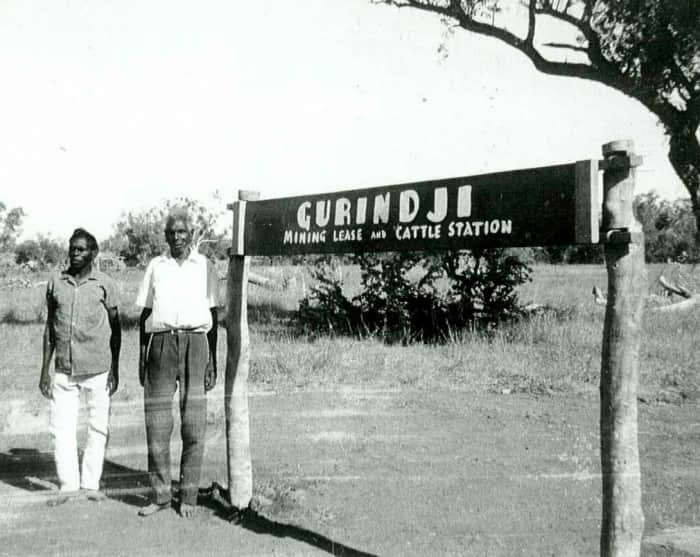
The Wave Hill walk-off, led by Vincent Lingiari, was a pivotal moment in Australian Aboriginal land rights history. In 1966, Gurindji stockmen, domestic workers, and their families walked off Wave Hill Station in protest against poor working conditions and a lack of land rights. Credit: National Museum Australia
Yeŋo ye lööŋ lëŋ Aboriginal nhïïm piny rilic yeen yakolë?
Dhu pïny tɛn wuöt lëŋ nhiimyeen ee wut koony bïk nuët keek thuɔ̈ŋ, ciɛ̈ɛ̈ŋ ku Wuönden. Yen aya ee kööny wɛt ɣoot, pialguöp, piööc and latueŋ baai ke lääunhom.
Dr Virginia Marshall, ke ye tiŋ Wiradjuri Nyemba ku lëŋ ŋiëc yiith piu, aci kuäny yiic tɛ tëk yeen thok thin luɛlden yic:
“Piu aa jaam kek ɣok wala tiim aa jam keek ɣok, mɛ̈n ɣok acï keek wïc buk ya taak tɛktɛk kɔc bɔu piiny Western… Lööŋ kua anyiköl ciɛ̈kciɛ̈k da aa ɣok ciöknhïïm dɛ̈ɛ̈t da yiic.”
Yïïth lëŋ kɔc nhïïm pïny acie ku pan raan nyiaai wala ɣot thɛɛr ciën. Keek aci looi bïk ɣön alɔŋ piny wën wic bï dhuök ciën tɛwën ŋic yeen ke leŋ anyiköl ku nuët ciɛ̈ɛ̈ŋden rɛɛl thin.
Cimënë pan thiin: Akutnhom Majilïth pïïny Darkinjung
Akutnhom Majilïïth Darkinjung pan thin Aboriginal Land Council, aci looi lööŋ ci looi pan New South Wales Löŋ Aboriginal Yiëk Yïth Piɛ̈nyden, aye nyuɔ̈th yïth lëŋ kɔc nhïïm ke looi rot.
Uncle Barry Duncan, ke ye moonhy Gomeroi ku ye raan töŋ kɔɔc yiök, aci tak tɛ̈n ke jɔk yen rot thin ruon 1983 alɔŋ ɣot thɛɛr ciën tɛn kɔc ke dhiët yeen:
“Yën akutnhom baai kene bɛ̈i etok. Yen ee dhel ke ci looi bï näŋ ke yiök thin dhuk piny ciën tɛn kɔc leŋ yen Aboriginal.”
Tɛn ruun juëc ci lɔ, Darkinjung aci koony yiëk nhiäl latuëŋ lääu ku riɛ̈l baai ka tɛ̈ɛ̈k-kä yiic.
Uncle Barry aci ye puou thɔ̈ɔ̈ŋ: “Yemënë aŋic kɔc… ɣok ake ŋic käŋ ku apël nyïïn muök pïny yiic.”

Vincent Lingiari beside a plaque marking the handing over of the lease in Wattie Creek, 1975. Credit: National Museum Australia
Ye ke yinda keek ka dhɛ̈ɛ̈l rɛɛl tuëŋ tɛn yïïth lëëŋ Aboriginal nhiim piny?
Ke ye looi yïth kɔc lëŋ nhïïm pïny aleu bi yiic riɛ̈l ku ke caath amäth. Yetok ee pïny thin ci ŋuëk ye tɔu ke bï dhuök ciën, ku kɔ̈k wïc dhuuk ciën aa rɔm keek löŋ wala löön cëëc keek gëlnhïïm.
Na ciɔ̈k alön lëŋ yen ka dhɛ̈ɛl, yïth pïny aŋuɔt ke tɔu ke rilic pan Australia dhël wën lɔ dhuuk puou ciën mɛ̈tmɛ̈t, tɛ̈m yïth ku ŋiëc ee Kɔ̈c Gɛ̈ɛ̈th Tuëŋ lääu nhïïm.
Why Indigenous land rights matter for all Australians?
Tɛn kɔc wën puöc bɛn pan Australia, piööc bi naŋ nuët kek ŋiëc yïth piny ee dhël wën path bi raan anyiköl baai. Acie wɛ̈t ku bï pïny määr — yen ee ku bi näŋ ŋiëëc ku dhuk ciën töŋ pïnynhom ci ciɛ̈ɛ̈ŋ cëëŋ piir kaam kɔc kek piny.
Kënë aci ciëëŋ thin ke nuɛ̈truon juëc tɛn ruön 60,000 — ku aŋuɔt latuëŋ yekölë
Gäät rot piny wala buɔth ɣok Australia Explained podcast ku ba ya yiök ke wël lëëk juëëc ku lëëk tɛ bi yïn yii cïok riëëk piny piirdun yam yic tɛ̈në Australia.
Na lëŋ kuät ke thiëc wala käwic bik keek jäämic? Ke yi tööc ɣok Imeel tɛn australiaexplained@sbs.com.au
